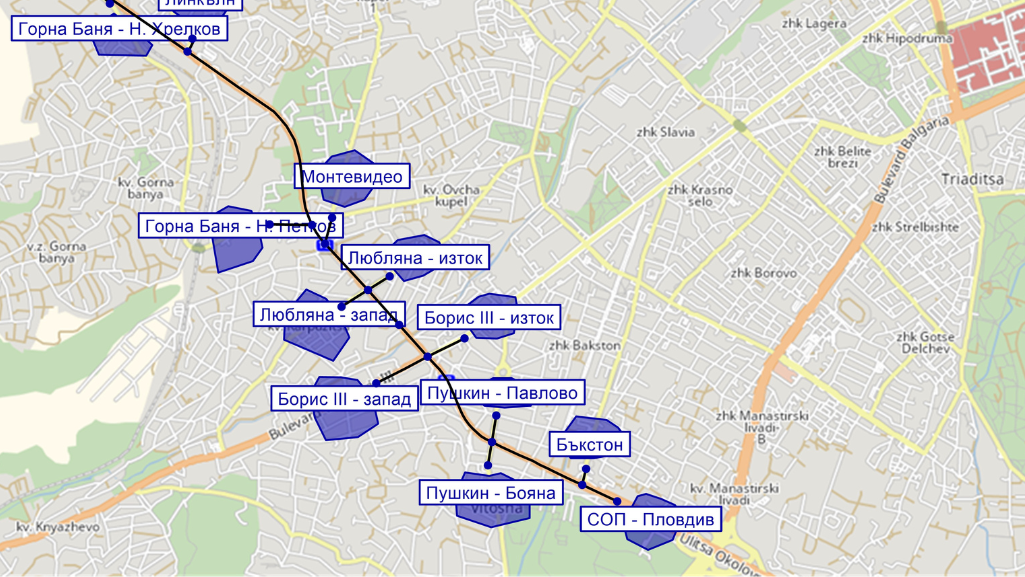Seoul Metropolitan Area stands as the bustling heart of South Korea, home to a staggering population of 26 million and ranking among the world’s most densely populated cities. Despite its robust transportation infrastructure comprising subways, light railways, and buses, population growth and urban expansion has outpaced the capacity of the current system, exacerbating traffic congestion.
Introducing the 3D mobility concept
A new 3D mobility concept aims to alleviate traffic congestion and establish an efficient transportation system by augmenting the existing 2D road network with innovative modes of travel, tapping into the sky and the iconic Han River.
The main components of 3D mobility concept include:
- UAM (Urban Air Mobility): Small electric aircraft for urban air travel
- River Bus: Waterborne public transportation using the Han River
- Cable Car: Aerial cable connection linking major transportation hubs and tourist attractions
The successful introduction of these new metropolitan transportation modes necessitates employing a robust traffic demand analysis model. Leveraging our extensive experience with PTV Software, our team at TOMMs undertook a comprehensive analysis encompassing travel demand, feasibility studies, and a microscopic simulation model for Seoul’s New Mobility initiative.
Seoul Metropolitan Traffic Model
To ensure accurate assessments, we utilized our expertise in PTV Visum to build a comprehensive traffic model of the Seoul metropolitan area.
Encompassing 1,659 traffic zones, 197,742 links, and 88,435 nodes, this model meticulously integrates public transportation routes and time profiles, incorporating GIS data from 3,744 bus routes and 1,156 urban railway routes.

Establishing Origin-Destination (OD) matrices relies on individual behavioral models. To achieve this, we leverage household travel survey data from the Korea Transport Database (KTDB) and socioeconomic indicators from V-World, a public spatial information service platform provided by the Ministry of Land, Infrastructure and Transport.
The results of modeling the network and OD using Visum software, expressed as private car and public transportation traffic volume, and V/C ratio, provide crucial insights.
3D Mobility Concept for Seoul Metropolitan Area
Based on the Seoul Metropolitan Traffic Model, we present two implementation cases for the 3D Mobility Concept in Seoul. This includes River Bus operations on the Han River, that flows through the center of the city, for alleviating traffic congestion. In addition, the concept encompasses three UAM pilot routes in the sky and a Cable Car serving as a connecting mode of transportation.
Feasibility studies are crucial for the realization of such a concept. To this end, demand analysis for each mode of transportation, the number of vehicles required, and an operation plan were prepared using Visum’s transportation model for the Seoul metropolitan area.
GTX Transfer Station Viswalk simulation
In our pursuit of seamless urban mobility, the Great Train eXpress (GTX) line emerges as a pivotal component. The large-scale, heavy-rail urban railway system is designed to connect Seoul’s satellite cities with the city center. Most GTX stations will integrate seamlessly with Seoul Metropolitan Subway network, enabling convenient transfers between different lines.
However, challenges arise at Yeouido Station, where approximately 16,772 passengers per day must navigate transfers across five different lines on five floors all located more than 50 meters underground.
To optimize efficiency and safety, and ensure a thorough review of the transfer station design plan, a pedestrian simulation of Yeouido Station was conducted using Viswalk.
The number of transfer passengers and users was estimated using a metropolitan transportation model. Subsequently, a transfer diagram was created to illustrate the demand for transfers between routes during peak hours. The analysis revealed that the transfer time between routes exceeded the recommended guideline of 6 minutes, reaching an average of 11 minutes.
Through a re-evaluation of the design and adjustments to factors such as the vehicle operation plan and elevator allocation based on the transfer demand pattern, the analysis indicated a significant potential for reducing these transfer times.
Empowering Global Transportation Innovation
Over the past two decades, PTV software solutions have proven to be invaluable tools in the Korean transportation sector. Widely adopted by transportation professionals, they have played a pivotal role in solving traffic problems.
As pioneers in PTV software applications, our team at TOMMs is committed to sharing our extensive experience and knowledge with transportation professionals worldwide. We firmly believe that our insights and best practices cultivated over our 20-year journey can catalyze the development of transportation systems on a global scale.
About TOMMs
Founded in 2001 as a PTV Partner in Korea, TOMMs has extensive experience in simulation-based projects.



